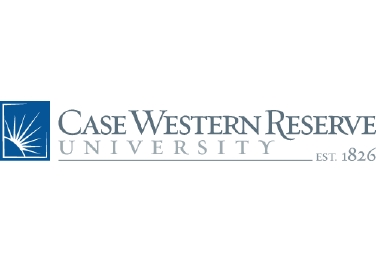Breast and Melanoma Trial With Lymphoseek to Identify Lymph Nodes
| Status: | Archived |
|---|---|
| Conditions: | Breast Cancer, Skin Cancer, Cancer |
| Therapuetic Areas: | Oncology |
| Healthy: | No |
| Age Range: | Any |
| Updated: | 7/1/2011 |
| Start Date: | June 2010 |
| End Date: | May 2011 |
A Phase 3, Prospective, Open-Label, Multicenter Comparison Study of Lymphoseek® and Vital Blue Dye as Lymphoid Tissue Targeting Agents in Patients With Known Melanoma or Breast Cancer Who Are Undergoing Lymph Node Mapping
Data from this pivotal clinical trial will be used to support a marketing application (i.e.,
NDA) of Neoprobe's Lymphoseek for use in anatomical delineation of lymphoid tissue (nodes)
in the lymphatic pathway draining the primary site of a tumor.
Multicenter, open-label, within-patient comparative study of Lymphoseek and vital blue dye
in the detection of excised lymph nodes in patients with known melanoma and breast cancer.
All patients will receive a single dose of 50 µg Lymphoseek radiolabeled with 0.5 or 1.0 mCi
Tc 99m and vital blue dye.
In patients with primary melanoma and breast cancer, lymph node status is often a strong
predictor of outcome and influences the course of treatment a patient may follow after
surgery. In an effort to reduce the morbidity and costs of detection of lymph node
metastases, surgical oncologists have developed a method by which the sentinel lymph node
(SLN; the first node in a draining basin) is identified intraoperatively and removed. This
technique, called sentinel node biopsy, has extremely high negative predictive values for
melanoma [1] metastases and breast cancer [2] metastases. The two largest trials for
melanoma, Morton, et al (2005) [3] and Rossi, et al (2006) [4], reported false negative
rates of 6.3% and 14.7%, respectively. Morton, et al (2006) [1], in perhaps the most mature
trial reported to date, showed a false negative rate of 3.4%. There is growing evidence that
sentinel node biopsy will have a significant impact on the management of melanoma. Sentinel
node biopsy also has extremely high negative predictive values for breast cancer metastases
[2]; the false-negative rates range from 0% to 9% [5-8]. There is growing evidence that
sentinel node biopsy will have a significant impact on the management of breast cancer
[5,9-11]. Although the survival and local recurrence studies have yet to be completed, the
technique has emerged into common practice.
Intraoperative lymphatic mapping (ILM) with a radiopharmaceutical is a nuclear medicine
examination which identifies for the surgeon the first lymph node to receive lymphatic flow
from the primary tumor site. This node is removed and analyzed for the presence of malignant
cells. By locating the lymph node prior to surgery, a small incision can be used to remove
the node and a smaller dissection can be employed. The high negative predictive value of the
technique seems to provide an accurate staging procedure and may spare patients who are
lymph node negative the morbidity of a complete lymph node dissection [1,2]. Consequently,
staging of melanoma by lymph node mapping and biopsy may be equivalent to regional node
dissection without the attendant post surgical morbidity.
An ideal lymph node imaging agent would exhibit rapid clearance from the injection site,
rapid uptake and high retention within the first draining lymph node, and low uptake by the
remaining lymph nodes. The ideal agent would also have low radiation absorption; high
biological safety; convenient, rapid, and stable technetium-99m labeling; and biochemical
purity.
Lymphoseek (Technetium Tc 99m diethylenetriaminepentaacetic acid mannosyl dextran, [Tc 99m]
DTPA Mannosyl Dextran) is a radiotracer that accumulates in lymphatic tissue by binding to a
mannose binding protein that resides on the surface of dendritic cells and macrophages.
Lymphoseek is a macromolecule consisting of multiple units of DTPA and mannose, each
synthetically attached to a 10 kilodalton dextran backbone. The mannose acts as a substrate
for the receptor, and the DTPA serves as a chelating agent for labeling with Tc 99m.
Lymphoseek has a diameter of about 5 nm, which is substantially smaller than current agents
used for targeting lymphoid tissue. Lymphoseek's small diameter permits enhanced diffusion
into lymph nodes and blood capillaries, resulting in a rapid injection site clearance. Upon
entry into the blood, the agent binds to receptors in the liver or is filtered by the kidney
and accumulates in the urinary bladder
We found this trial at
8
sites
Case Western Reserve Univ Continually ranked among America's best colleges, Case Western Reserve University has...
Click here to add this to my saved trials
Click here to add this to my saved trials
12902 USF Magnolia Dr
Tampa, Florida 33612
Tampa, Florida 33612
(888) 663-3488

H. Lee Moffitt Cancer Center & Research Institute Moffitt Cancer Center in Tampa, Florida, has...
Click here to add this to my saved trials
Click here to add this to my saved trials
Click here to add this to my saved trials
Ohio State University The Ohio State University’s main Columbus campus is one of America’s largest...
Click here to add this to my saved trials
Click here to add this to my saved trials
California Pacific Medical Center California Pacific Medical Center is one of the largest private, not-for-profit,...
Click here to add this to my saved trials



